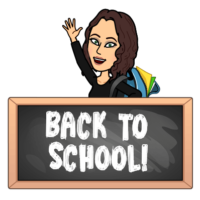
I have been reflecting on what makes for a successful first day of school. As we consider this, it is vital that we take into account the students themselves. For a student, the first day of school in a new classroom can cause excitement or anxiety, inspiration or boredom. What do you want your students to think and feel as they leave your room after that first day?
The neuroscience of Universal Design for Learning (UDL) contains guidance in designing an experience that fosters purpose and motivation in students. Consider the following tips as you prepare for students’ first day in the learning environment you create.

- Be Authentic: I asked my son, a junior in high school this year, what he would want teachers to do his first day in their classroom. His answer, “I want them to tell me about themselves”. We engage the affective network of the brain when we minimize threats. Psychological safety is key. When we share our humanness with students, their affective filter is lowered. Think back to the teachers you had who told stories of their lives. My students loved to hear stories about my son, our dog, and what I was like as a student. The human spirit craves connection. We seek to relate to others on a personal level. The first step in meeting this human desire for belonging is to introduce ourselves, to share a bit about our lives. Relationships are key to learning. We can model this the first day of school.
- Icebreakers with Choice: Many students love icebreakers, as they build camaraderie amongst classmates and aid in developing a positive classroom culture. However, for some students, icebreakers are uncomfortable. They are a negative experience. I despised icebreakers as a student and continue to dislike them to this day. To me, these activities feel trivial and forced. To my son, an introvert, icebreakers cause anxiety. This being said, I have come to realize that many students and adults alike greatly enjoy icebreakers. It lowers these learners’ affective filter and promotes psychological safety for them. How do we address this variability? The answer is in choice. When designing an icebreaker, a get to know you type activity, allow students to work on their own if they prefer. Particularly on this first day in your classroom, allowing student choice validates individuality. Options provide autonomy and show value to each student.
- Ask for Input: As a student, I always appreciated teachers who asked me to tell them a bit about myself. This was the case in elementary school all the way through high school. Young students can draw a picture, older students can write. In each grade level I taught, including kindergarten, I began an “interactive journal” in which students would write letters to me. I would respond once a week. Students were allowed to draw or write about anything at all. This could be anything from their favorite video game, to what they did over the weekend, to their sadness in remembering a sibling who had passed away. The times I read through students’ letters was often an emotional experience for me. It aided me in building relationships with my students, in valuing them as individuals with whom I wanted to engage in conversations. The more I learned about my students, the better I was able to design learning experiences that were relevant to them. I began to connect academic content to my students’ lives and interests. Learning became purposeful, sustainable, and authentic.

How might you design an experience for the first day of school? And what action will you take to build upon this foundation for the remainder of the school year? Consider ways to foster psychological safety, build relationships, and validate students as individuals. It is by engaging the affective network that our students will enter our classrooms with purpose and motivation.
